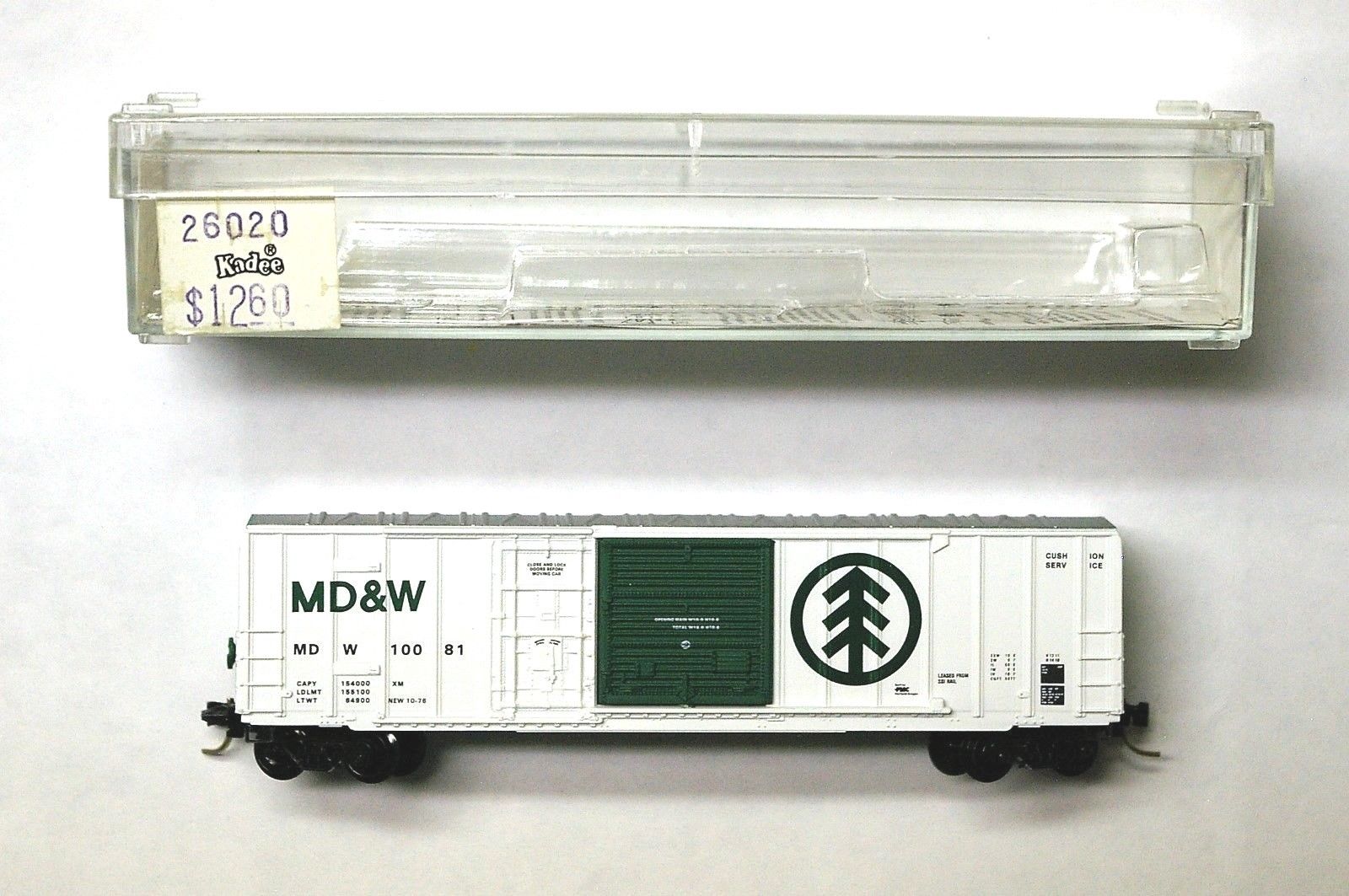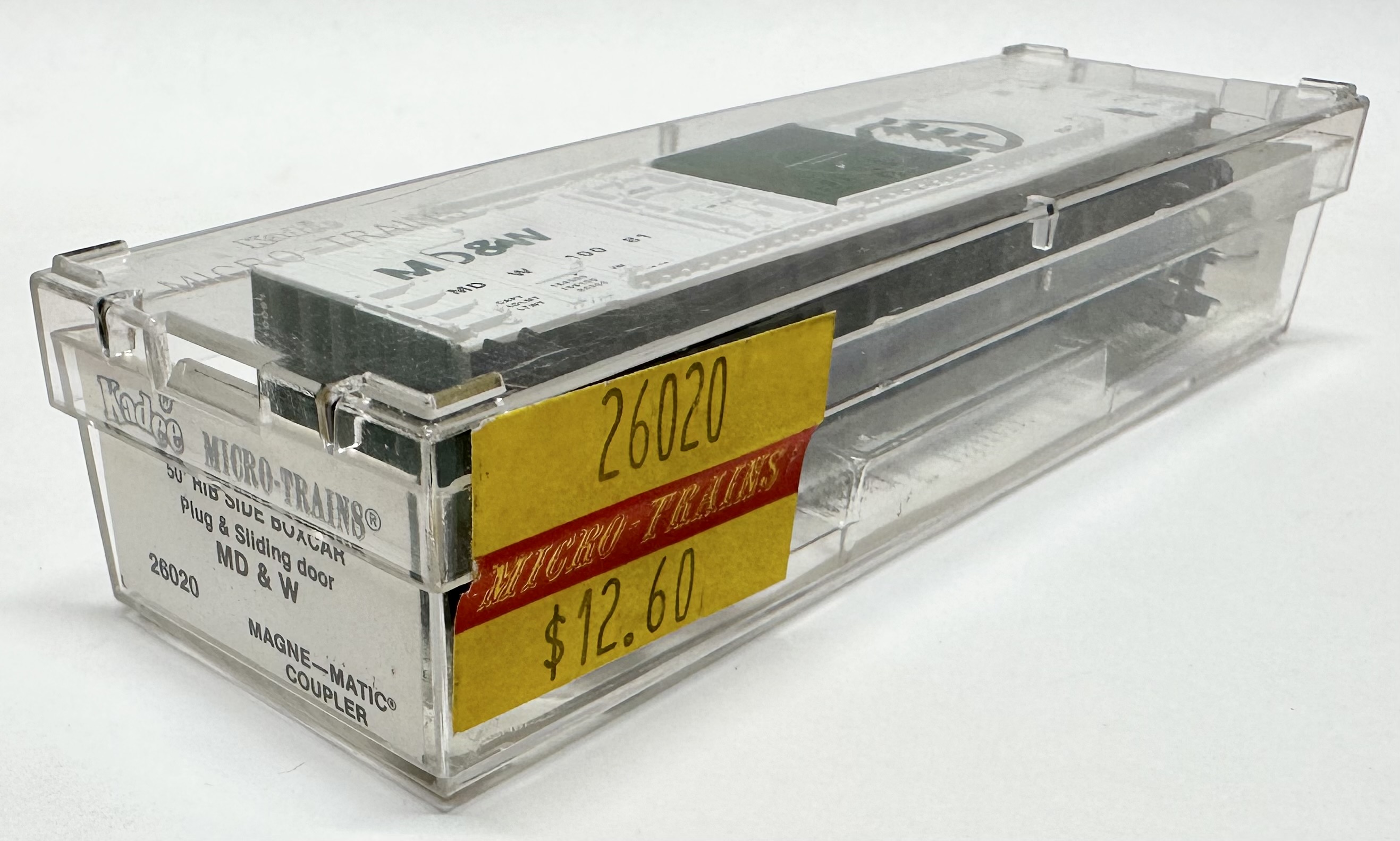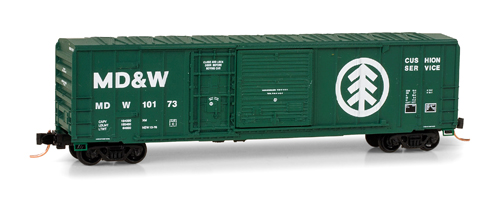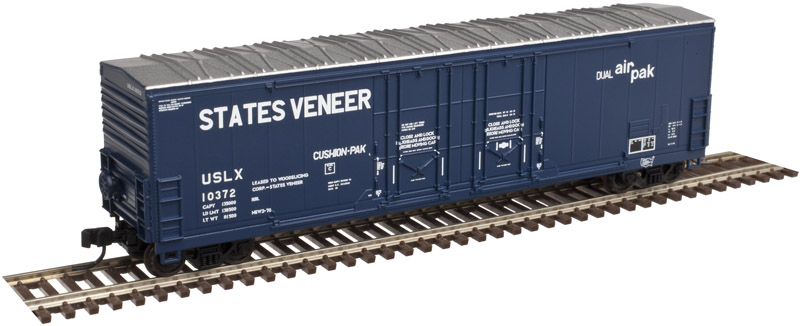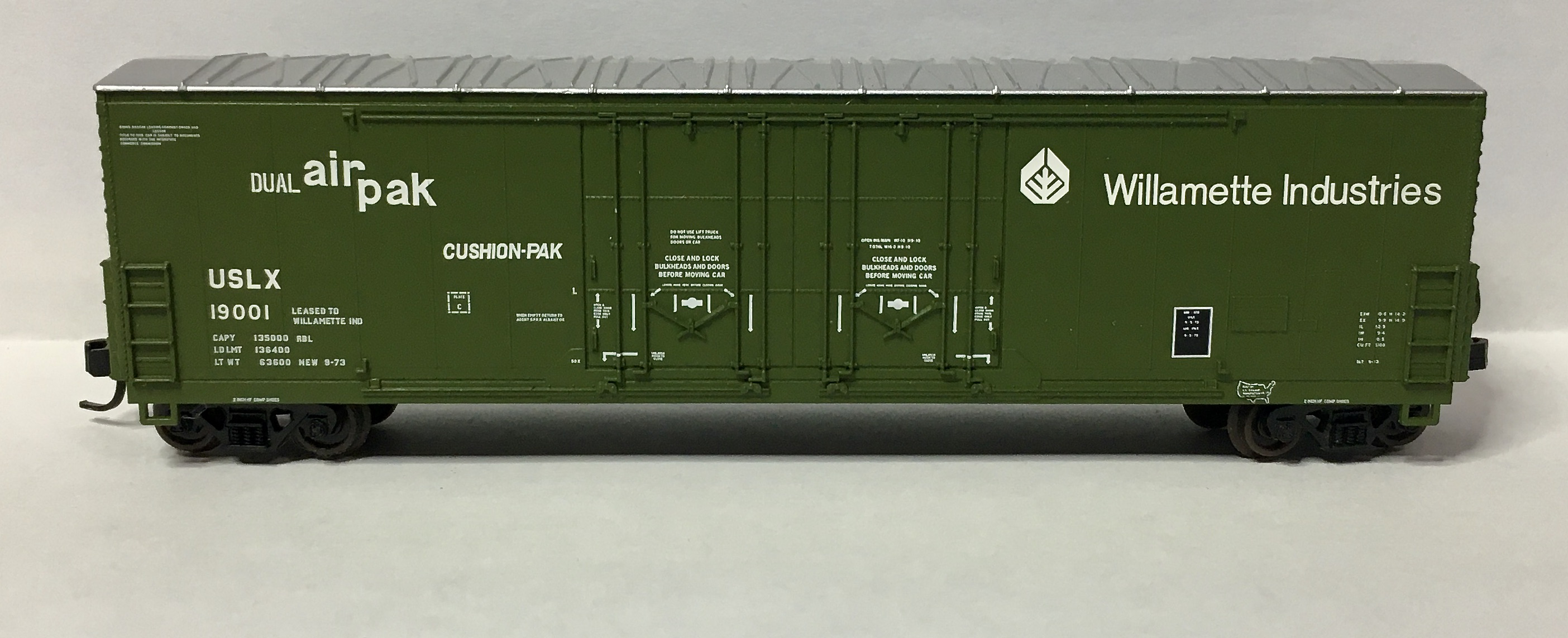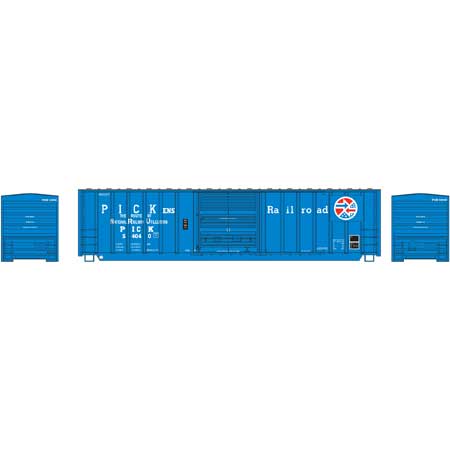Specific Item Information: 2nd run - same road number as 1985 release - this is NOT an error in the database.
Prototype History: While the 40-foot boxcar was a standard design, and it did come in different setups depending on the type of freight being transported, it was not large enough for efficient mass commodity transportation. The 50-foot boxcar made its first appearance in the 1930s and steadily grew in popularity over the years, which further improved redundancies by allowing for even more space within a given car. Today, the 50-footer remains the common boxcar size. After the second world war ended, and steel became once again readily available, steel became the go-to choice for construction of boxcars. Pullman Standard and ACF were some of the most prolific builders of these cars.
These cars came in many variations. For instance, double-doors became practical for large/wide loads, end-doors useful for very large lading such as automobiles, and interior tie-down equipment was helpful in keeping sensitive products from being damaged in-transit. In 1954 the Santa Fe developed its "Shock Control" (and later "Super Shock Control") technology for new boxcars with upgraded suspension systems to further improve the ride-quality and reduce the chance of damaging freight.
In the 1960s, the flush, "plug" style sliding door was introduced as an option that provides a larger door to ease loading and unloading of certain commodities. The tight-fitting doors are better insulated and allow a car's interior to be maintained at a more even temperature.
These cars came in many variations. For instance, double-doors became practical for large/wide loads, end-doors useful for very large lading such as automobiles, and interior tie-down equipment was helpful in keeping sensitive products from being damaged in-transit. In 1954 the Santa Fe developed its "Shock Control" (and later "Super Shock Control") technology for new boxcars with upgraded suspension systems to further improve the ride-quality and reduce the chance of damaging freight.
In the 1960s, the flush, "plug" style sliding door was introduced as an option that provides a larger door to ease loading and unloading of certain commodities. The tight-fitting doors are better insulated and allow a car's interior to be maintained at a more even temperature.
Road Name History: 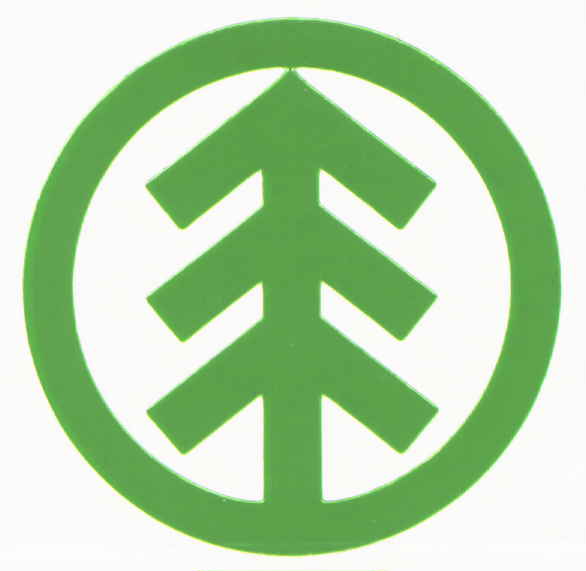 Minnesota Dakota and Western Railway (reporting mark MDW) is a shortline railroad operating 4 miles of track between International Falls and Ranier, Minnesota as well as between International Falls and Fort Frances, Ontario via the Fort Frances' International Falls International Bridge, which is jointly owned by MDW and Abitibi Consolidated. The railroad serves the paper mills in both International Falls and Fort Frances. The railroad interchanges with Canadian National Railway at Ranier.
Minnesota Dakota and Western Railway (reporting mark MDW) is a shortline railroad operating 4 miles of track between International Falls and Ranier, Minnesota as well as between International Falls and Fort Frances, Ontario via the Fort Frances' International Falls International Bridge, which is jointly owned by MDW and Abitibi Consolidated. The railroad serves the paper mills in both International Falls and Fort Frances. The railroad interchanges with Canadian National Railway at Ranier.
In 2005 the railroad handled 11,841 carloads of wood pulp, pulpwood, chemicals, raw materials and finished paper. The railroad has a fleet of more than 3100 railcars.
Originally a subsidiary of Boise Cascade designed to serve its paper mills, the MDW was created in 1910; the company had been incorporated in 1902 as the International Bridge and Terminal Company (reporting mark IBT). The Canadian company, however, retains that name.
In August 2006, Boise Cascade announced that MDW would be sold to the Watco Companies, a company specialising in shortlines; however, the sale was never closed.
In February 2008, Boise Cascade spun off its paper, packaging, newsprint and transportation operations, including MDW, to a new company, Boise Inc.

In 2005 the railroad handled 11,841 carloads of wood pulp, pulpwood, chemicals, raw materials and finished paper. The railroad has a fleet of more than 3100 railcars.
Originally a subsidiary of Boise Cascade designed to serve its paper mills, the MDW was created in 1910; the company had been incorporated in 1902 as the International Bridge and Terminal Company (reporting mark IBT). The Canadian company, however, retains that name.
In August 2006, Boise Cascade announced that MDW would be sold to the Watco Companies, a company specialising in shortlines; however, the sale was never closed.
In February 2008, Boise Cascade spun off its paper, packaging, newsprint and transportation operations, including MDW, to a new company, Boise Inc.
Brand/Importer Information: Micro-Trains is the brand name used by both Kadee Quality Products and Micro-Trains Line. For a history of the relationship between the brand and the two companies, please consult our Micro-Trains Collector's Guide.
Manufacturer Information:  Kadee Quality Products originally got involved in N-Scale by producing a scaled-down version of their successful HO Magne-Matic knuckle coupler system. This coupler was superior to the ubiquitous 'Rapido' style coupler due to two primary factors: superior realistic appearance and the ability to automatically uncouple when stopped over a magnet embedded in a section of track. The success of these couplers in N-Scale quickly translated to the production of trucks, wheels and in 1972 a release of ready-to-run box cars.
Kadee Quality Products originally got involved in N-Scale by producing a scaled-down version of their successful HO Magne-Matic knuckle coupler system. This coupler was superior to the ubiquitous 'Rapido' style coupler due to two primary factors: superior realistic appearance and the ability to automatically uncouple when stopped over a magnet embedded in a section of track. The success of these couplers in N-Scale quickly translated to the production of trucks, wheels and in 1972 a release of ready-to-run box cars.
In October 1990 Kadee separated in two companies, with the newly created Micro-Trains® Line Co. continuing the Z, Nn3, and N Scale product ranges, with Kadee retaining the HO range.

In October 1990 Kadee separated in two companies, with the newly created Micro-Trains® Line Co. continuing the Z, Nn3, and N Scale product ranges, with Kadee retaining the HO range.
Item created by: nscalemodeler160 on 2016-04-07 14:51:35. Last edited by grothe77 on 2023-07-17 23:20:26
If you see errors or missing data in this entry, please feel free to log in and edit it. Anyone with a Gmail account can log in instantly.
If you see errors or missing data in this entry, please feel free to log in and edit it. Anyone with a Gmail account can log in instantly.


